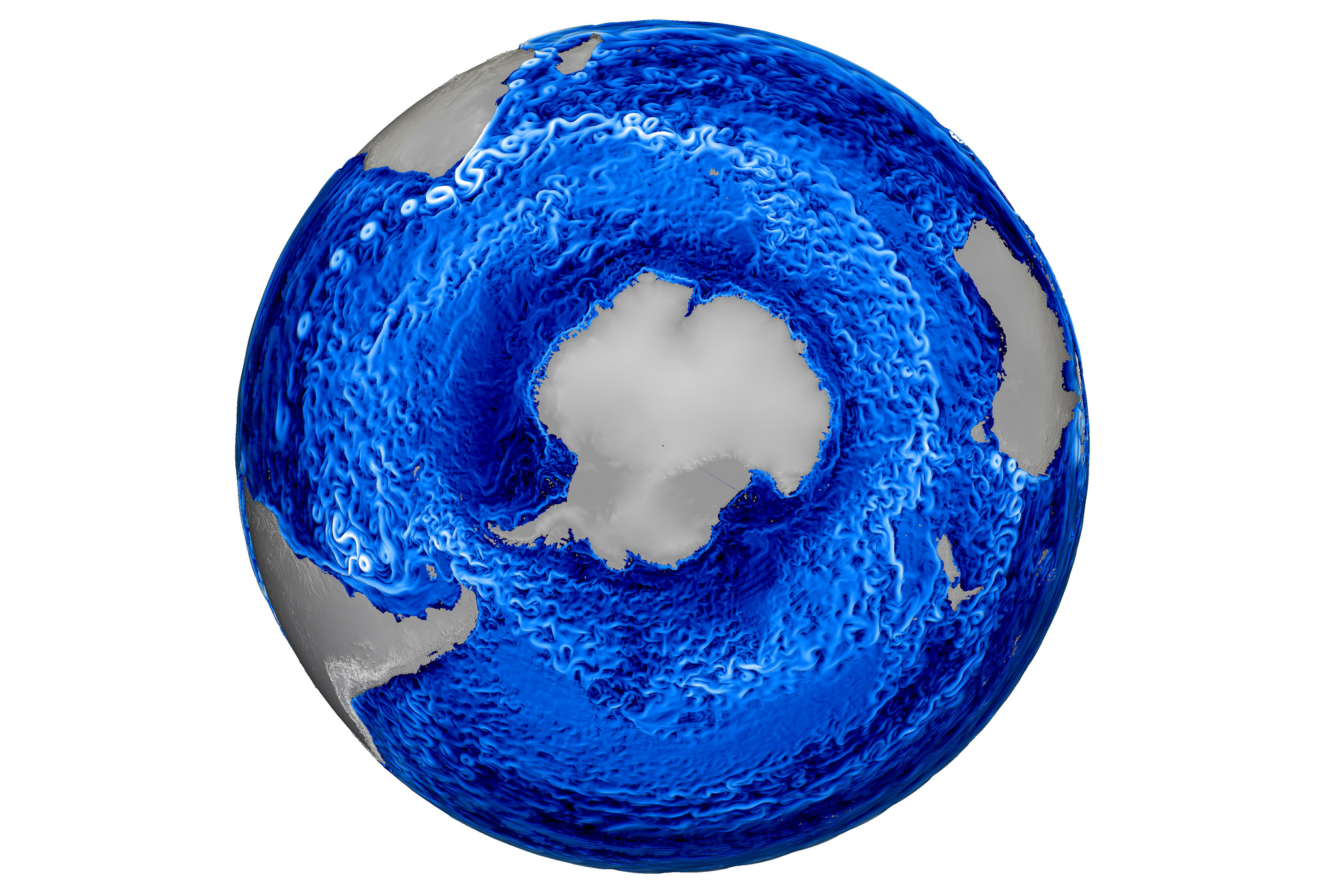Antarctica's Swirling Currents Revealed in Stunning Image

Unbroken by major landmasses, Antarctica's ocean currents race around the icy continent with powerful force. Now, a new image from the Los Alamos National Laboratory in New Mexico reveals in amazing detail the turbulent rush of swirling eddies and currents in the Southern Ocean.
The scene is from a high-resolution, supercomputer replica of the Southern Ocean that is part of a Department of Energy project to create better climate models. The model that the scientists used to make the new image can test how climate change is altering the planet's oceans, for instance, by testing how currents transport heat.
In the Southern Ocean, a circumpolar current flows eastward around Antarctica, and a standout feature in the image is the large eddies (whirlpoollike features) that form at the southern tip of Africa as the Agulhas Current runs down African's eastern edge. Such eddies also appear in real life, in satellite and shipboard observations, the researchers said in a statement. According to heat measurements taken in the Southern Ocean, these eddies can move heat from north to south, toward Antarctica.
Earlier modeling work by Los Alamos researchers counted some 6.7 million eddies in the world's oceans, according to a study published in 2013 in the Journal of Geophysical Research: Oceans. Hundreds of eddies lasted for more than 200 days, and some were more than 3,280 feet (1,000 meters) tall, the study reported. Individual eddies can measure 6 to 93 miles (10 to 150 kilometers) across.
The DOE climate-modeling effort is called the Accelerated Climate Modeling for Energy (ACME) project. It is intended to forecast local effects of climate change and is focused on modeling the interactions between Earth's water, ice and biogeochemical cycles (such as plankton life cycles). The models run on DOE supercomputers.
Follow Becky Oskin @beckyoskin. Follow Live Science @livescience, Facebook & Google+. Originally published on Live Science.
Get the world’s most fascinating discoveries delivered straight to your inbox.



